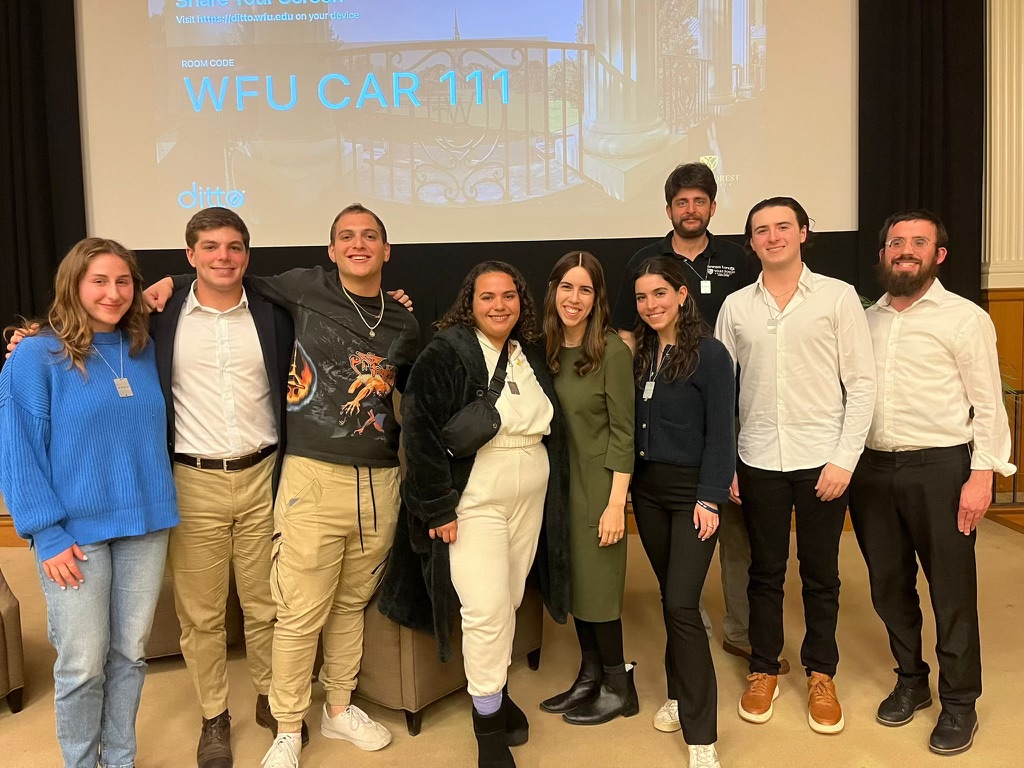Behind the closed doors of Winston Hall’s labs, biology students are busy at work studying honey bees, identifying species and examining fungi in magnolia leaves.
Students pursuing a Biological Sciences degree are required to conduct at least one semester of research during their undergraduate career. The goal of Wake Forest’s research requirement is to provide students with the opportunity to understand the how and why behind any scientific result.
“What you learn in the classroom is the conclusion,” said biology professor Ke Zhang, “but the process, why we get there, is more important than what is there.”
The complex, and often frustrating, process Zhang describes is research.
At larger universities, joining a lab is often more competitive, and lab groups tend to have more than 10 students, according to biology professor Clifford Zeyl. This makes it challenging for students to initially find research opportunities and then have one-on-one interactions with professors once they do join a lab.
On campus at Wake Forest, however, lab groups tend to be about six students or fewer, allowing students individual time with professors. Additionally, with 4,955 undergraduates, Wake Forest is bigger than most liberal arts schools, and therefore has the resources and the funding for a variety of research projects, according to senior biology major Brianne Marrow.
“How accessible professors are and how accessible it is to join a lab at Wake Forest is something really unique and special,” Marrow said. “That’s really confirmed my choice to choose Wake Forest.”
While some students simply view the biology research requirement as another item to check off their list towards satisfying the major, other students have become truly passionate and excited about their research projects.
Seniors Brianne Marrow and Lexie Wang and sophomore Megi Gjini are examples of students who have deeply invested their time and energy into their projects and are now making a difference with their research.
Inside the hive with Brianne
Marrow’s research in professor Susan Fahrbach’s lab is focused on understanding how pesticides impact the honey bee’s synaptic organization, or learning and memory in bee brains.
While scientists know the behavioral side effects pesticides have on bees, such as learning impairment and memory reduction, “no one has ever actually looked in the brain to see what structural changes are happening to perhaps cause these behavioral changes,” said Marrow.
After exposing both adult and larval bees to three different types of pesticides, imidacloprid, coumaphos and fipronil, Marrow dissects each bee’s brain, which is about the size of half a grain of rice, and then slices the brains using a machine called a compresstome. Once sliced, parts of neurons in these brain pieces are illuminated to measure the density of microglomeruli, or sensory integration centers in the brain.
Pesticide exposure can cause a decrease in the density of these sensory integration centers, reducing learning and memory connections in the bee’s brain.
Persistent use of pesticides will continue to damage the honey bee’s microglomeruli, preventing bees from pollinating plants. Not only will this cause repercussions to the ecosystem, but also to the agricultural industry. With bees pollinating 80 percent of agricultural crops, a decrease in pollination can cause an estimated $15 million in damage to farmers across the United States, according to The Nature Conservancy. Less pollination leads to less crops, causing the prices of produce to increase.
Understanding the structural impact pesticides have on honey bees’ brains will help scientists find a solution that still supports agricultural needs, but also does not harm the bees, according to Marrow.
Exploring Serengeti with Megi
Around the corner from Dr. Fahrbach’s honey bee lab, Gjini has been expertly identifying species for Snapshot Serengeti in professor Michael Anderson’s lab.
Throughout Tanzania’s Serengeti National Park are 225 motion-censored cameras that capture pictures of the diverse species roaming the park. These pictures are then posted on the public domain, Snapshot Serengeti, where anyone can identify the photographed animals.
“Usually what ends up happening is you have anywhere from 15 to 20 different people classifying these images, but these people aren’t experts, they’re everyday people,” Gjini said. “So you need someone to go in and check to see if these images have been classified correctly, and that’s where I come in.”
After spending two months familiarizing herself with the animals posted on Snapshot Serengeti, Gjini has been labeled an expert and can now review and revise labels of species on the site.
Gjini’s classification work helps researchers better understand the complexities surrounding biodiversity and how competing species are able to coexist. For example, determining the number of gazelle species in Serengeti can help researchers learn how herbivores compete for the same resources in a single ecosystem.
As a student researcher in high school for two summers, Gjini began conducting research before arriving on campus and has viewed research as a vital step in the learning process since then.
“You can sit in a class and learn about animals all you want, but you’re not going to get the most out of doing that,” Gjini said. “I think it’s important for students to get involved in research because you see the real-world applications of learning.”
On Magnolia Quad with Lexie
One floor above Marrow and Gjini, Wang studies endophytes in magnolia leaves with professor Brian Tague.
While most fungi cause diseases in plants, endophytes are a unique type of fungi that are actually beneficial to a plant’s growth and physiology, according to Wang. What is interesting about these endophytes is that scientists are still trying to determine where they come from.
One aspect of magnolia leaves Wang examined was through fall, the process by which leaves remove excess water. After studying endophytes in magnolia leaves for over two years, Wang has found that endophytes cannot only come from the air or water, but can also come from the soil.
“When you’re doing research, at some point you can be the first person in this universe to discover some new knowledge or witness the emergence of some new phenomenon,” Wang said. “Even if that phenomenon or knowledge is insignificant to others, it is important to you because you will never forget the deep sense of completion that experience brings to you.”
Wang’s discovery has beneficial implications for magnolia trees, as it provides a better understanding of how endophytes can be used to help protect magnolia trees. Chemicals in magnolia leaves and flowers are often extracted to produce essential oil products, according to Wang. However, this extraction process is harmful to the magnolia tree.
Learning more about endophytes can help scientists determine a way for endophytes to produce the same chemicals found in magnolia leaves and flowers. Instead of harming magnolia trees in order to extract these chemicals, scientists could use endophytes as a source to make and sell essential oils.
Using endophytes as a source for extraction would also have economic benefits, according to Wang, as endophytes are not only quicker but also cheaper to grow than harvesting magnolia trees.
Due to the biology department’s research requirement, Marrow, Gjini and Wang have been able to discover new data in a field they enjoy.
“I think that people think research is something only genius do, they figure out these big theories and things we talk about in actual classes,” said senior biology major Emily Miller, “but having research be part of the biology curriculum makes it seems more human.”



















